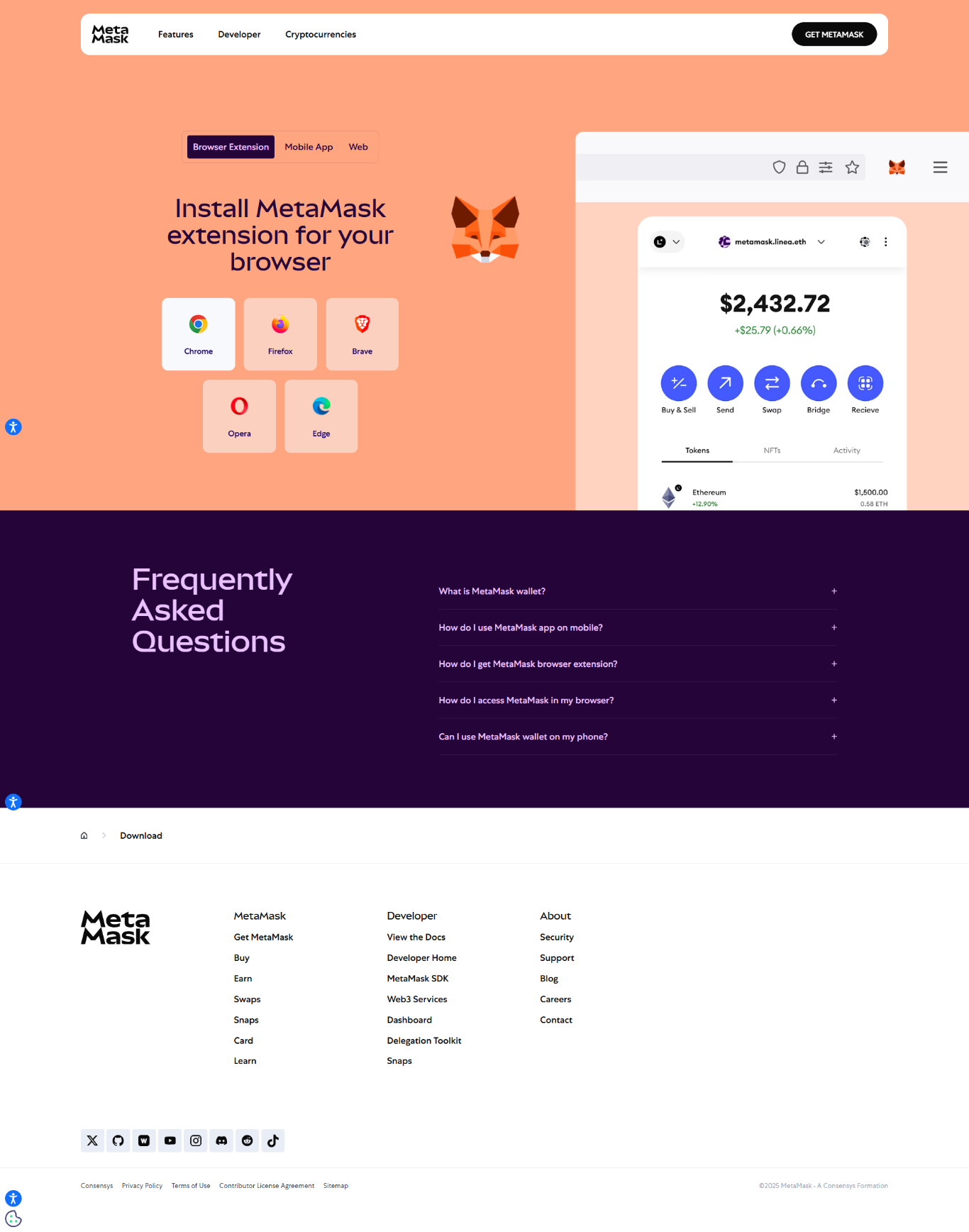MetaMask is a wallet interface and browser bridge to decentralized apps. “Logging in” with MetaMask doesn’t mean entering a username and password on a website — instead, you unlock access to your private key locally (in the extension or app) and then approve cryptographic actions. Understanding the difference between unlocking, connecting, and authenticating keeps your keys, tokens, and NFTs safer while still allowing you to interact with DeFi, marketplaces, and dApps.
What “Login” means in MetaMask
When we say “login,” we typically mean one of three things: (1) unlocking the MetaMask extension or app with your password, (2) connecting MetaMask to a website so it can read your public address, and (3) cryptographically signing a message or transaction that proves ownership of an address. None of these steps should involve sharing your seed phrase or private key with a website or third party.
Signing in via the browser extension (short)
The common desktop flow uses the MetaMask browser extension. Install the official extension for Chrome/Brave/Edge/Firefox from the browser’s store, create or restore a wallet inside the safe UI, then lock/unlock with your password. When a dApp needs permission, it will open a MetaMask popup asking to connect or asking you to sign. Read each request closely — connecting reveals your public address; signing can approve token moves or change on-chain state.
Signing in on mobile
The MetaMask mobile app mirrors the extension experience and adds convenience for on-the-go interactions. Unlock the app with a PIN or device biometric (if enabled), use the built-in browser to open dApps, and allow the connection prompts. Because phones are portable and often always-on, consider enabling biometric unlock only if your device is well secured with a strong passcode and full-disk encryption.
Hardware wallets and MetaMask
For higher-value assets, integrate a hardware wallet (Ledger, Trezor, etc.) with MetaMask. The hardware device keeps private keys offline and confirms every signature on the device’s screen. MetaMask will show addresses and ask the hardware to sign; you physically confirm on the device. This is one of the safest ways to “log in” because a compromised computer cannot extract your private key from the hardware.
Security rules you must follow
- Never share your seed phrase or private key. MetaMask or any legitimate service will never ask for it to “help you log in.”
- Use strong, unique passwords. The MetaMask password protects the local vault — pair it with browser and OS security measures like disk encryption and a secure OS account password.
- Prefer hardware wallets for large balances. Keep day-to-day funds in a hot wallet and store the rest behind hardware.
- Don't sign random messages. Some signatures authorize spending; always confirm the action and the destination contract before approving.
- Verify extensions and apps. Install the official MetaMask distribution and double-check URLs and publisher names in the store to avoid clones.
Troubleshooting common login problems
If the extension won’t unlock, first check that you’re using the correct password and that the extension is up-to-date. If the browser itself is blocking popups or if another extension conflicts, try disabling other extensions temporarily. For mobile, ensure the app has necessary permissions and that OS background restrictions aren’t force-stopping it. If you accidentally lost access and you have a safe backup of your seed phrase, you can restore on a fresh installation — otherwise, without seed or private key there is no recovery.
• Use only official MetaMask downloads.
• Back up seed phrase offline (not in cloud).
• Integrate a hardware wallet for significant holdings.
• Inspect dApp requests carefully before approving.
Privacy and connectivity notes
Connecting MetaMask to a site shares your public address with that site; consider using multiple accounts or ephemeral addresses to limit cross-site linking. MetaMask also allows you to choose networks (Ethereum mainnet, testnets, or custom RPCs) — ensure you are on the intended network before signing any transaction because networks and tokens differ.
Final practical tips
Treat MetaMask like a wallet in your pocket. Log out (lock) when idle, confirm every transaction on-screen, and regularly review connected sites from the MetaMask settings to revoke access you no longer use. If you see unexpected token approvals or connections, revoke approvals immediately and, if necessary, move funds to a fresh wallet protected by a hardware device.
